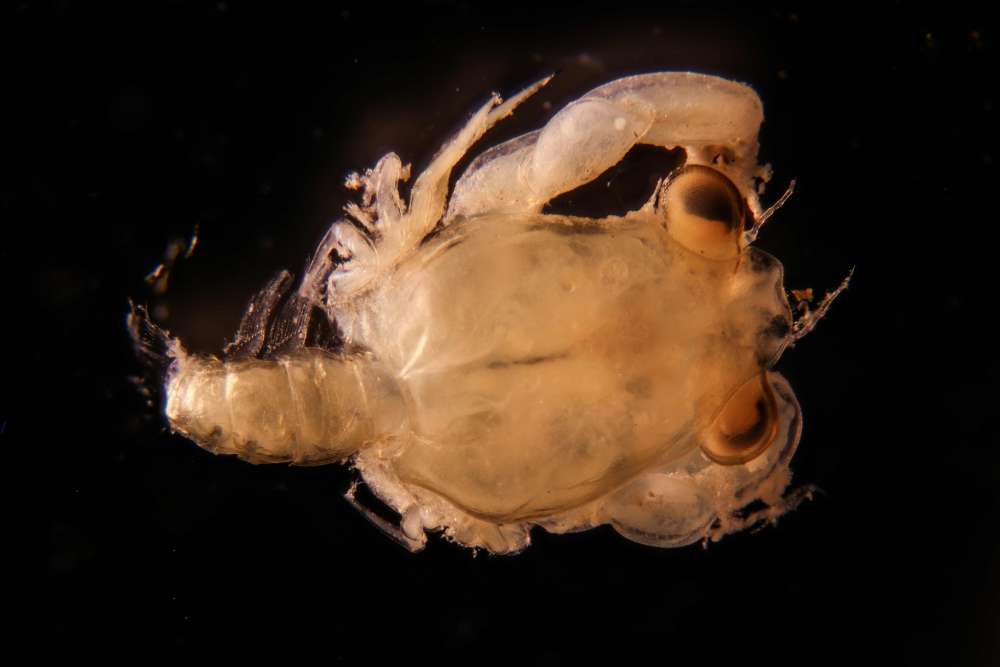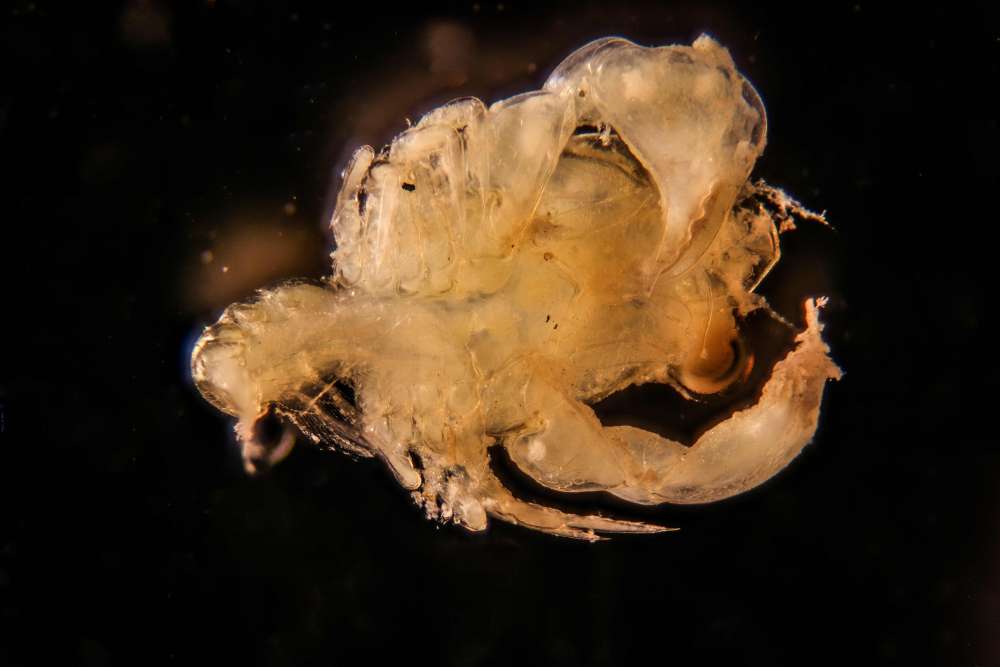The Wrack
The Wrack is the Wells Reserve blog, our collective logbook on the web.
The Wrack is the Wells Reserve blog, our collective logbook on the web.
As I was picking through a plankton sample recently, an unusual and unfamiliar specimen caught my eye. For many months now, I have painstakingly sorted larval fish, crabs, and other invertebrates—one petri dish after another—from jars full of plant matter and debris. I have looked at hundreds, perhaps thousands, of crab larvae. But I had never seen a specimen quite like this one.
The larva was at least twice the size of the other crab larvae in my sample and had strikingly large pinching claws. I snapped a photo through the eyepiece of my microscope, sent it to visiting researcher Lee Pollock, and together we compared this specimen to at least half a dozen crab species typically found in our region. None of them quite matched this crab’s distinct morphology.


After spending a lot of time scouring the scientific literature, Lee and I finally put a label on the unfamiliar larva. It is a box crab, in the family Calappidae, also known as a “shame-faced” crab.
Exactly what species of box crab is it? That’s perplexing. Unfortunately, box crabs in the larval stage are not easy to identify to the species level and the scientific literature has provided little help. In order to identify it properly, we will probably need to find an expert who can pick out miniscule differences in box crab morphology. So far, we have found very few biologists with that kind of experience.
Alternatively, we may be able to take a DNA sample from the larva to see which species’ DNA signature it matches. Before doing this, we would want to ensure that DNA sequences of all potential box crab species are known. We would also need to be very careful with our procedure so as not to damage our only box crab specimen.
Over the past 12 years, our research team has been collecting two to four plankton samples per month, year-round, off the dock at Wells Harbor. Rain, snow, or shine, we collect these samples so we can detect long-term changes in populations of fish, crabs, and other invertebrates in the Webhannet estuary. Until recently, this survey was almost entirely focused on identifying fish larvae. We added crab larvae to our effort so we could monitor both seasonal trends in crab populations and the arrival of new species.
Out of the hundreds of samples we have picked through since 2014, the vast majority of crab larvae in our samples are the prolific and invasive green crab (Carcinus maenas), along with the native rock crab (Cancer irroratas) and Jonah crab (Cancer borealis). These three species are very common in the Gulf of Maine.
Box crabs typically live in the warm waters south of the Carolinas. Other than a single adult box crab discovered off the coast of Newfoundland in 2009, Lee and I have uncovered no record of this type of crab—at any life stage—within the Gulf of Maine.
How did this little larva get into Wells Harbor in October 2019? We will never know for sure, but we can consider possibilities.
As sea surface temperatures rise, a variety species have expanded their ranges into the warming Gulf of Maine, but since we have found just a single box crab we cannot say this species is expanding its range. Ocean currents may have swept this larva into the Gulf Stream far to our south and carried it to Nova Scotia, where it drifted counterclockwise in the Gulf of Maine gyre to Wells. Or the larva could have hitched a ride in the ballast water of a ship, or even the feathers of a seabird.
Regardless of how this shame-faced crustacean got to Maine, the rare finding highlights the value of frequent monitoring and careful documentation. This is not the first time, nor will it be the last, that southerly species have appeared in our northern waters. Blue crab, black sea bass, northern sennet, summer flounder, and a spotfin butterflyfish are among the other unexpected species we have encountered at the Wells Reserve.